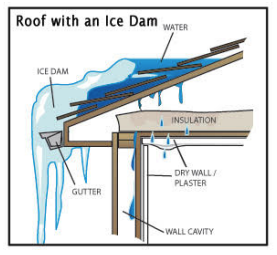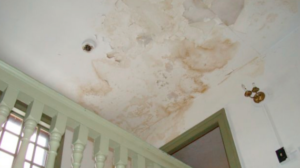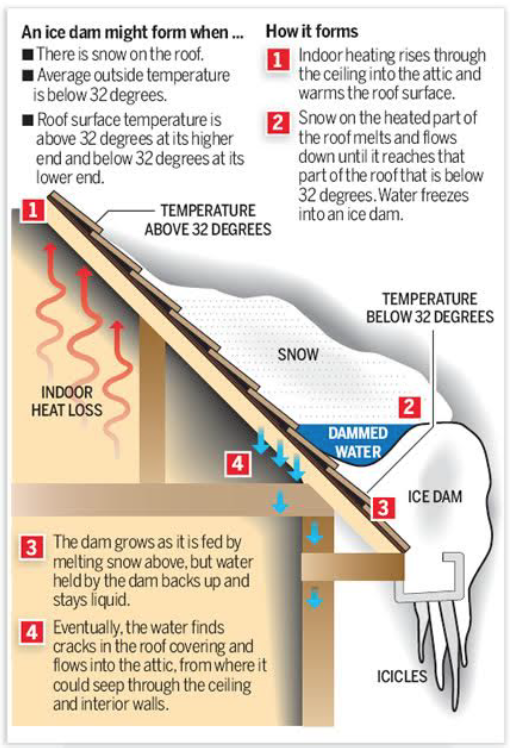

Generally speaking, the damage is covered under your property insurance policy as long as you give your insurer timely notice and it is reasonably clear it was not solely due to known and pre-existing roof damage.
Disputes related to ice dam claims can involve:
- Policy language limiting payment for repairs to Actual Cash Value
- Arguments over pre-existing damage or construction defects
- Unqualified or unethical roofing “experts” – Door to door solicitors acting as public adjusters without a license
- The scope and cost of necessary repairs
- The insurer’s obligation to pay to restore the roof to a uniform and consistent appearance (“matching”)


An illustration of ceiling damage due to an ice dam
Options for resolving disputes over ice dam claims include:
- Negotiation
- Filing a complaint with your State Department of Insurance
- Mediation
- Appraisal
- Litigation
Preventing Ice Dams
Proper ventilation, drainage and insulation are the only ways to prevent ice dams and can be achieved in the following ways:
- Make sure your gutters are clear of leaves and debris
- Check and seal places where warm air could leak from your house to the attic: vent pipes, exhaust fans, chimneys, attic hatches and light fixtures are all possibilities
- Inspect, or have your roof and attic inspected for proper ventilation and insulation
- Look for signs of inadequate ventilation: rust spots, rusty nails or a mildew smell are all signals that moisture has formed on the inside of your roof
- If you have soffit vents in your eaves, make sure they are not blocked and insulation surrounding them is secured so that air can flow easily
- Keep snow from accumulating on the lower three to six feet of your roof
Additional Steps
- Install snow and ice slides to prevent ice and snow from “bonding” to the lower roof
- Install a rubberized ice and water shield beneath the roof shingles for the first three to six feet from the eaves up
- Install heating cable along the eaves to melt ice
Removing Ice Dams
- Consult a roofing professional
- Do not use a snow blower, shovel or blowtorch to try to chip, break or melt ice dams.


UP thanks and acknowledges claim professional Scott Modlin for contributing to this publication.
